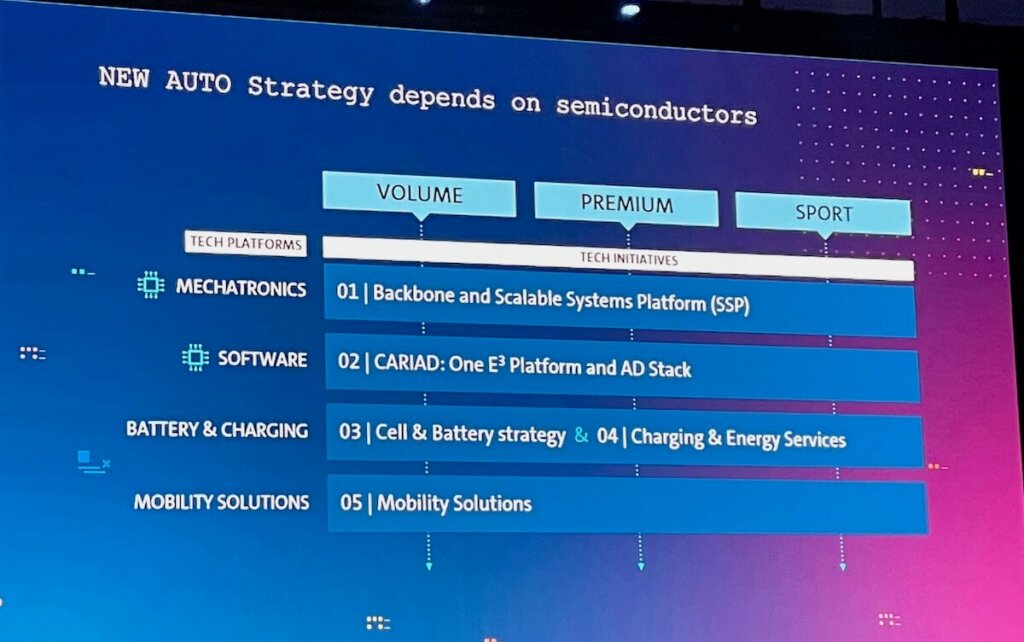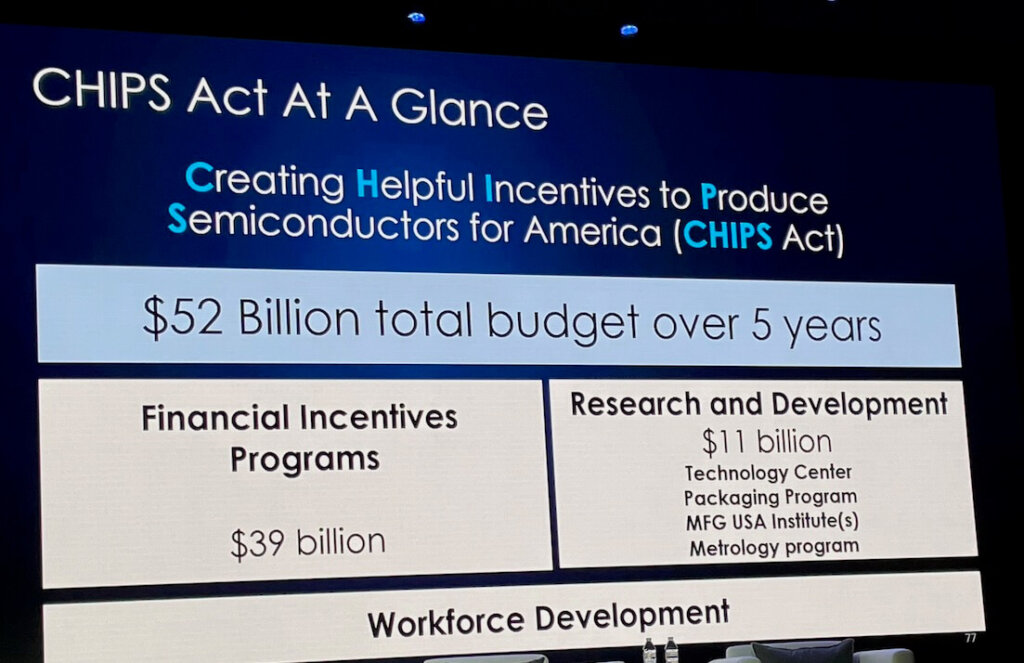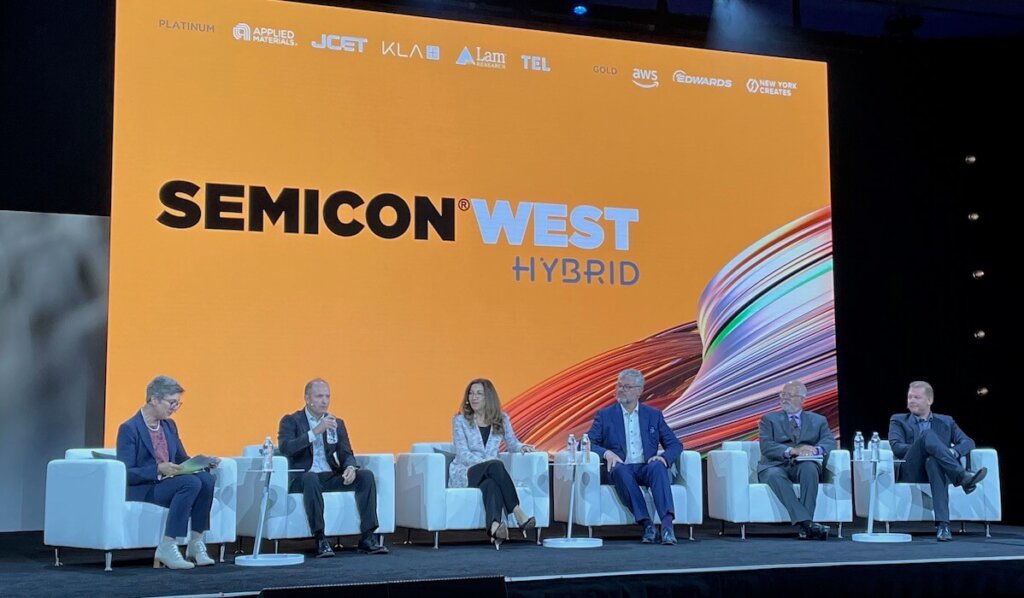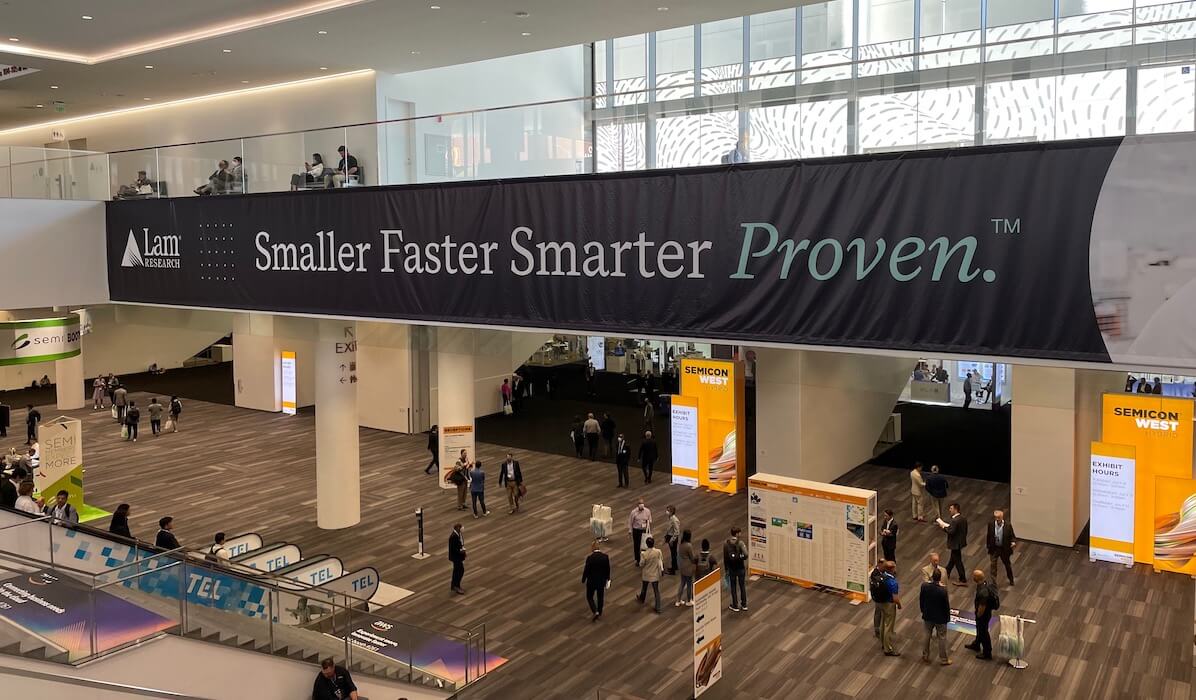Is it over already? SEMICON West 2022 flew by, true to form. My week was filled with keynotes and conversations with many movers and shakers in the semiconductor industry and beyond. Here are my initial observations and takeaways, with lots more to come in our upcoming podcast episodes.
It’s a new dawn; it’s a new day; it’s a new life, and we’re feeling good…
Legendary singer, Michael Cormick, belted out Michael Bublé’s Feeling Good to officially open the show. It set an optimistic tone as SEMICON West 2022 came back in full swing after SEMICON West “Lite” in December.
There’s no doubt that after two and a half years in pandemic mode, we were all ready to resume the SEMICON West traditions – absorbing great talks, visiting with colleagues and customers on the show floor, party-hopping around the Moscone Center in the evenings, grabbing late night bites to eat, and then doing it all over again the next day. My social calendar included the Exhibitor Reception, EVG’s booth party, the Kiterocket Afterparty, our first-ever SemiSister’s Drinks for DEI Happy Hour, and EMD’s Reception.
I must admit, I used to be better at cramming it all in! I’m grateful to have had the support of our regular bloggers, Dean Freeman, and Julia Goldstein, who will be reporting back with their own observations from the Market Symposium, Bulls and Bears, and Sustainability Summit.
Semiconductors are Serious Business
Listening to Tuesday’s opening remarks by SEMI CEO, Ajit Manocha, and the newly minted President of the Americas, Joe Stokunas, it became clear that this year’s theme was about the importance of semiconductors to the world, and not just to power our consumer electronics, smartphones, and gaming devices. Manocha pointed out how COVID 19 vaccine development relies on supercomputers, and that the US government realizes how important semiconductors are to national security, which is why they are establishing new incentives to bolster the domestic supply chain.
While I recall how many of the past keynotes were more aspirational, focusing on what we COULD achieve with advanced semiconductor devices – things like autonomous vehicles, smart cities, AR/VR glasses, facial recognition, and so on… this year’s keynotes focused on current needs – supporting the data revolution, automotive electronics (not to make vehicles self-driving, but to get them off the line), an update on the Chips Act, handling our chaotic world, establishing a resilient supply chain, and the value of veterans in the workforce (this last one will be covered in a podcast interview sponsored by TEL).
Can We Keep Up with Digital Demand?
Solving these challenges is important work; because according to Dr. Siva Sivaram, Western Digital, data has become our lifeblood. He says it drives emotion and human progress. It is the source of wisdom – as the value from data is transforming information into knowledge, which becomes wisdom. He talked a lot about data storage and advancements in 3D NAND that are enabling the data revolution, and how important it is to accelerate data value creation.
What his message ultimately boiled down to is that supply chain issues are impacting the economics of data value creation, making it unsustainable. He put the onus on equipment and materials suppliers, saying if they don’t become more productive, they are standing in the way of human progress. That’s a lot of pressure to put on the suppliers if you ask me!
Cars Need More Chips. Period.
Volkswagen’s Berthold Hellenthal did a great job of putting the challenges of automotive electronics in perspective and talked about steps VW is doing to address it, basically by building its own semiconductor technology ecosystem.
Never mind the autonomous vehicles of the future, today’s cars are more semiconductor-based than ever (Figure 1). Using the Porsche 911 and Porsche Taycan as examples, the 1972 model of the 911 contained 8 semiconductor devices. The 20022 Taycan has approximately 8000. By 2030, that number will have doubled, or even tripled.

The key takeaway was that 80% of those chips are not leading edge 5nm technology, but 40nm and above. These are still primarily manufactured in 200mm facilities. Hellenthal is not interested in increased capacity at 5nm, he says we need it in legacy nodes. That’s where capacity needs to be added.
“We realize we are part of the semiconductor industry and need you!” he said. Let’s make the supply chain resilient. Contact us if you have interesting ideas for how to get control of the supply chain. We’re ready to do things we haven’t done before.”
Chips Act Update
Lori E. Lacassio, Under Secretary for NIST, reported that while the Chips for America Act is still moving (very slowly) through congress, it is moving. While it waits in congress, she says China has invested $15OB in its domestic semiconductor supply chain, the EU has committed $30-50NB in funding, India’s weighing at 30B, Japan is at 6.8B, and South Korea announced plans to build the largest semiconductor supply chain in the world. We need to get the CHIPS Act over the finish line.
Lacassio also gave us a rough breakdown of how $52B will be dispersed over the next five years (Figure 2), and I have to say it was rather disappointing, given all the conversations I’ve had with experts in the advanced packaging space.

Essentially, she said the lion’s share ($39B) will go to financial incentive programs for semiconductor manufacturers. The remaining $11B will be used for developing a technology center, a packaging program, a US manufacturing institute, and a metrology program. Workforce development is underscored in her chart but there are no funds allocated to it. Those of us who understand the importance of advanced packaging and heterogeneous integration know that this just isn’t going to cut it.
Navigating Change
One thing we all know about the semiconductor industry is its aversion to change. That’s why I was excited to listen to a keynote by Dr. Vanessa Akhtar, co-author of the book “Change: How Organizations Achieve Hard-to-Imagine Results in Uncertain and Volatile Times.”
Her talk was very timely since as an industry we must adapt to the rapidly changing and accelerating demands on semiconductor technology. She talked about how as humans we are hardwired to fear some types of change and embrace others, based on how it impacts our survive-and-thrive system. She provided some actionable tips organizations can use to embrace change, tapping into our thrive instincts:
- building adaptability by acknowledging threats and reframing them as opportunities.
- Create a workforce that responds to future challenges.
- Engage more people and delegate control
- Celebrate progress along the way, because accumulated small wins help achieve big wins
Summing it up, to keep up with the demands of today, we need more organizations with agile and adaptable cultures. The talk was inspiring – she deserved to speak to a packed house, unfortunately, the audience thinned out quite a bit when she took the stage.
Shaping a More Resilient Supply Chain
Bettina Weiss, SEMI Chief of Staff, moderated a keynote panel on building a resilient supply chain. She asked panelists to look forward and share what needs to change for the semiconductor industry to have a more robust and resilient supply chain.

While a lively conversation ensued, it can be summed up in one sentence: Commitment to environmental social governance (ESG), sustainability, transparency, collaboration, a just-in-case mindset, and trust are all critical to underpinning efficient supply efforts.
Are you Listening?
The bulk of my time at SEMICON West I spent recording a bunch of interviews that will be featured in 3D InCites podcast episodes over the next 7 weeks. So, get ready for some good listening by following the 3D InCites Podcast wherever you get your podcasts! It all kicks off this Thursday with interviews with SEMI’s Joe Stokunas, Ajit Manocha, Mousumi Bhat, and Shari Liss.



















